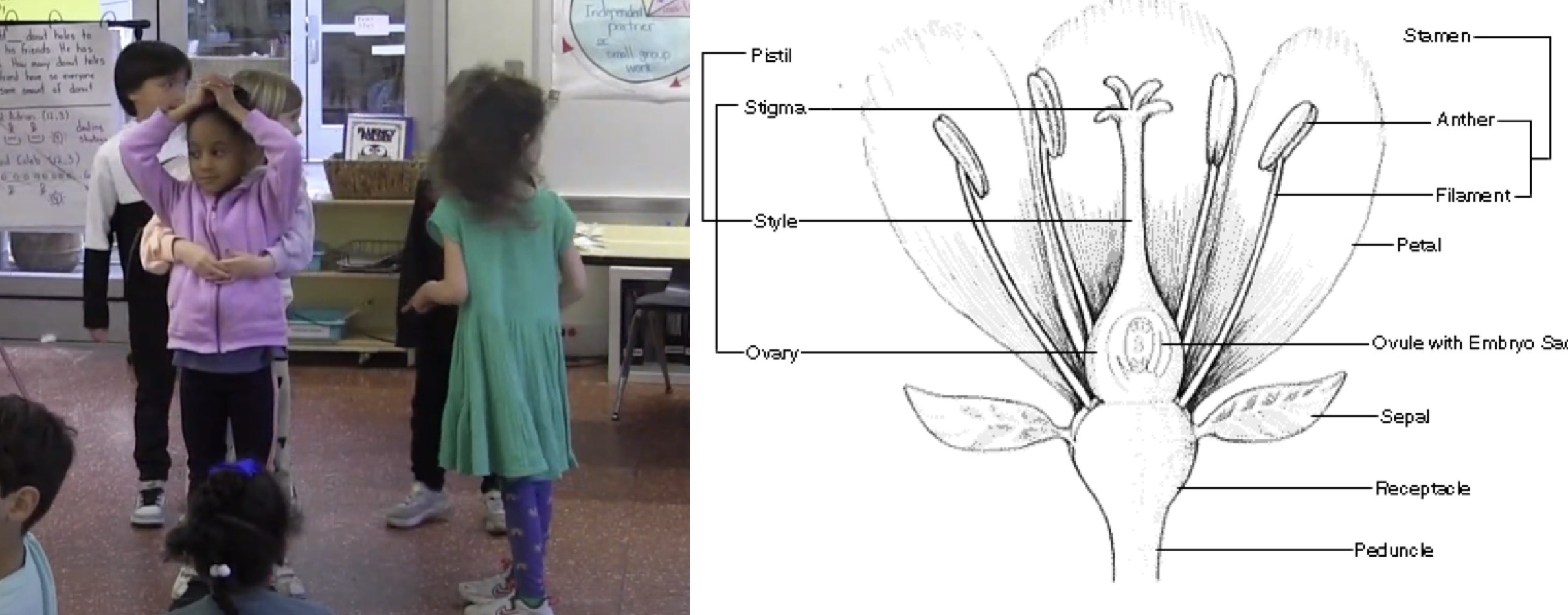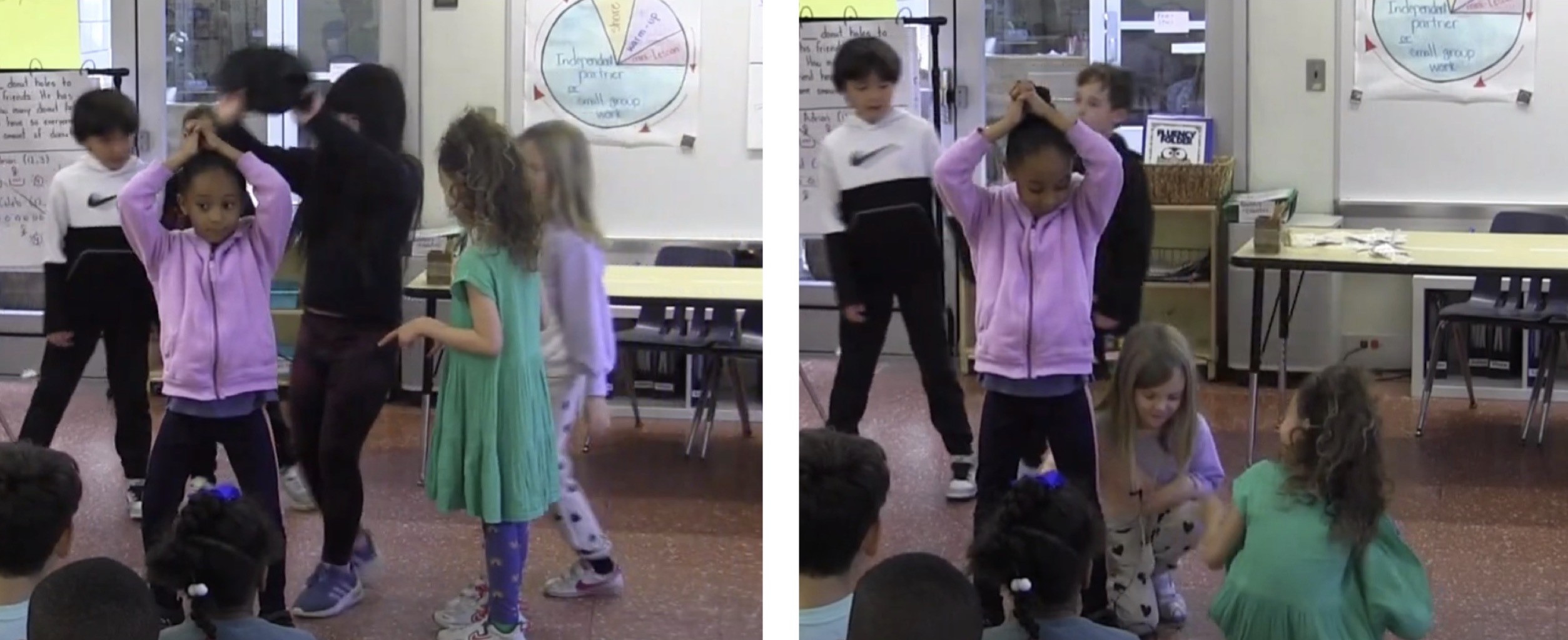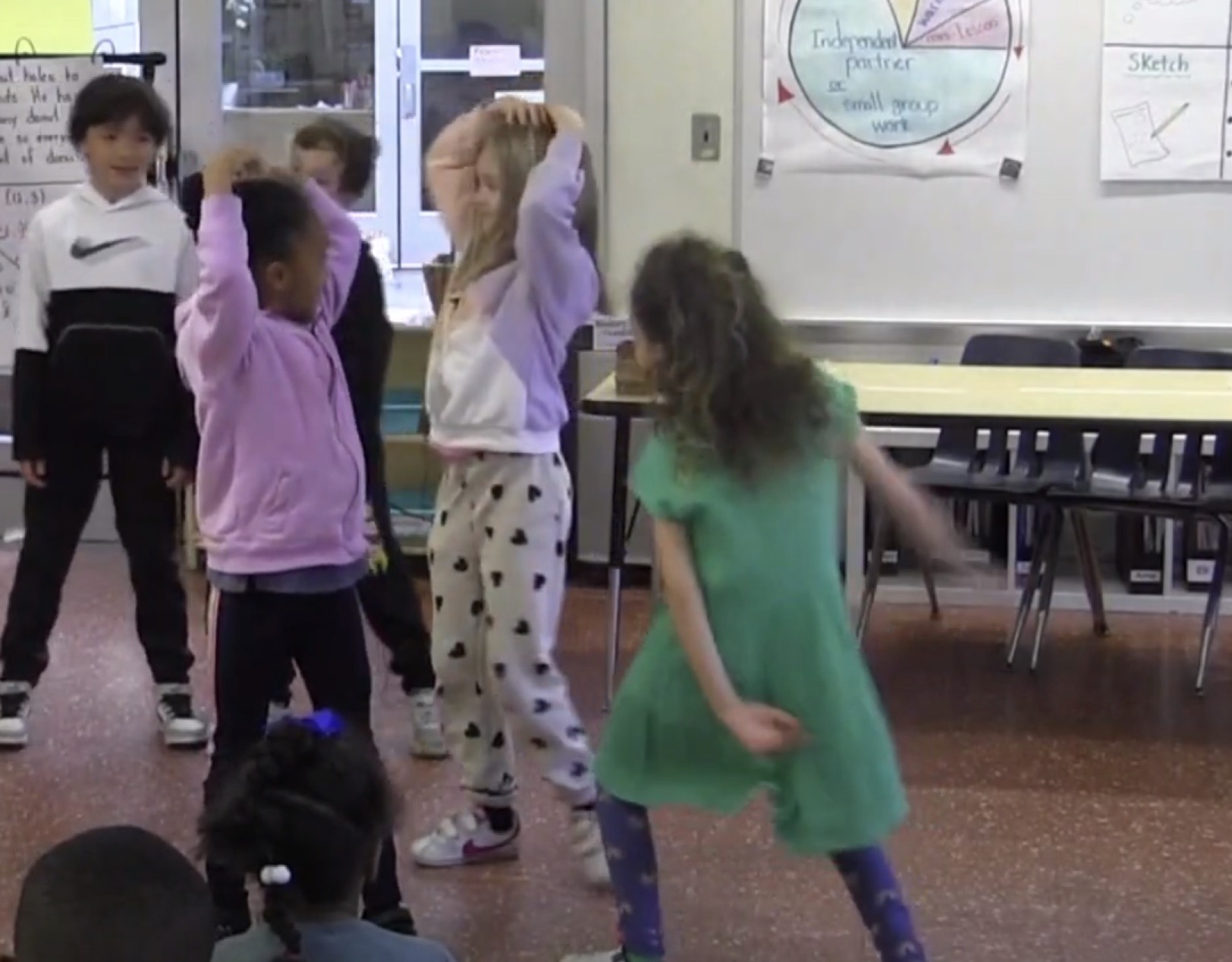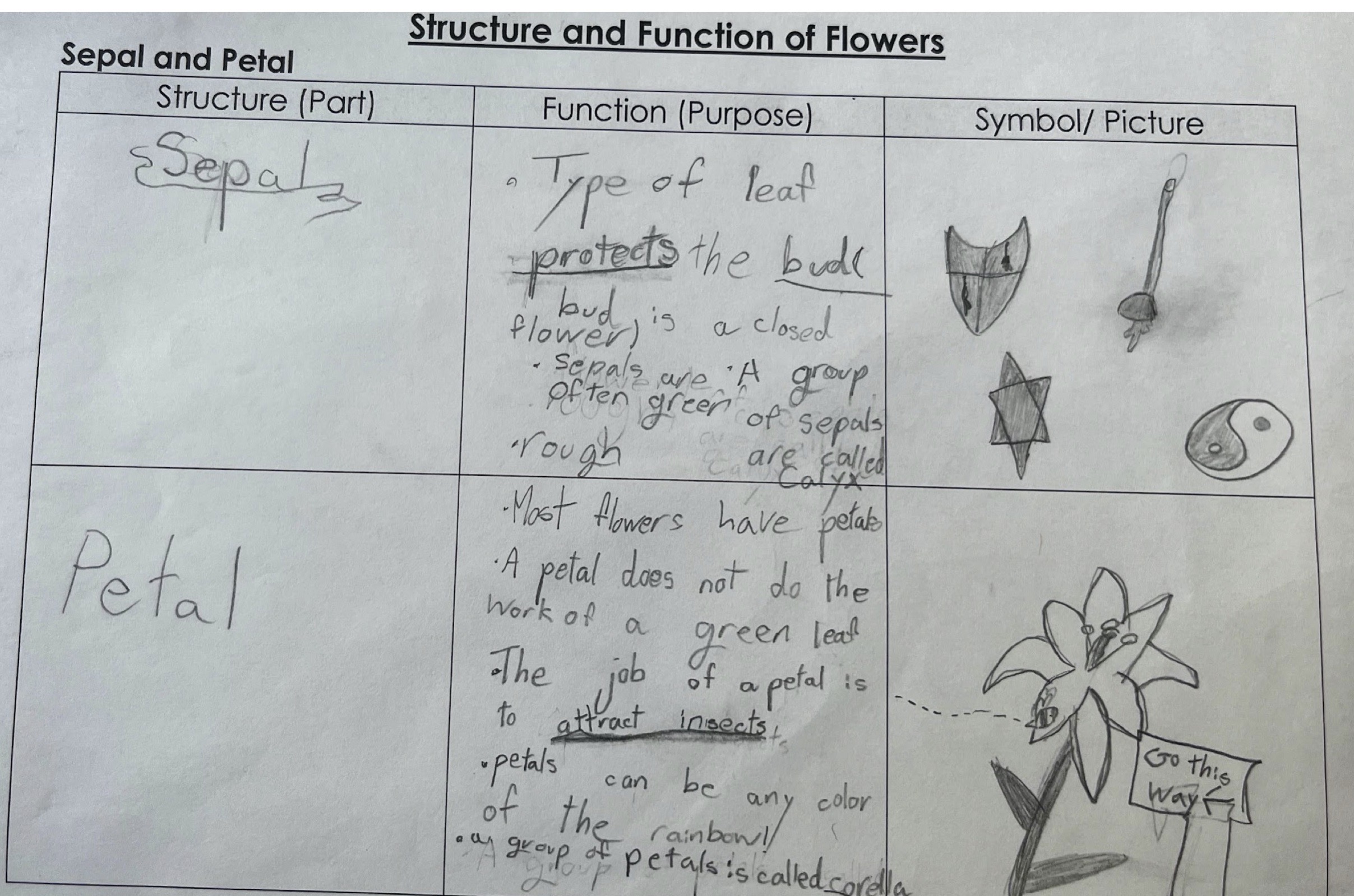
Image 1. Students begin their dance (left) of the parts of the flower (right [1])
This year CONNECT Researcher Dr. Christine Lee and Demonstration Teacher Anna Terrazas (Rooms 3 & 4) have been collaborating in designing playful learning as a way of understanding the structure and function of flowers. During this winter quarter, I had the opportunity to observe a dance put together by the students. The students created this dance to show how they understand and represent the structure and function of flower parts (see Image 1).
The dance begins and the audience is silenced as a band of students take on the challenge of creating the essence of a flower in motion. Two boys lined the back of the stage, bumping into each other back and forth. Mimicking the dance of the anthers, they chant “Tomato plant, tomato plant, tomato plant, tomato plant!” Meanwhile, another student, with the charm of a blooming petal, points invitingly towards the pistil in hopes a pollinator would come and partakes in the pollen feast. Coming out of stage left, a buzzing bee finds its way onto the scene. “Bzzz”ing with glee as it has found a flower, the bee grabs the student acting as pollen and flies away.
Image 2. A buzzing bee grabs a student playing as pollen
But then, we see the bee come back, and pretends to dump a bucket full of pollen on the flower, thus pollinating the flower with the pollen it has received. The pollen wiggles down the style, eagerly anticipating the transformation. Another student, with hands like magic, begins the enchanting process as the ovary begins to create the tomato.

Image 3. The bee brings pollen to the flower and the pollen wiggles down the style
As the boys are still singing their chant, the tomato grows, grows, and grows. The once-pollen-carrying students bursts out and has transformed into a ripe, juicy tomato. The whole group erupts into a joyful song, chanting “Tomato, tomato, tomato plant!” So how are these students able to make connections like this? How were the students able to think of dances and movements that symbolize these flower characteristics?

Image 4. Students turn into a tomato after successful pollination
Engaging students in understanding complex scientific concepts, such as the anatomy of a flower, often requires innovative approaches that foster an embodied and multimodal learning process. The bigger picture for this lesson is how plants, pollinators, and people are connected. After dissecting flowers, sketching flowers, and planting in the Lab School campus, the students were asked to complete a chart delineating the parts of a flower, their respective functions, and symbolic representations of their purpose (see blog post by Laila Shaaban). This allowed students to express their understanding of the parts of flowers through symbols and creative representations. The students filled out a chart that listed the name of the part, then the function of the flower, and finally, a symbol or picture representing the flower (see Image 5).

Image 5. Chart of structure and function of flowers
While filling out the chart for the petal, students reflected on the function of a petal, which was to attracte pollinators. One student drew a flower with a sign saying “Go this way!” representing how petals try to attract pollinators. In addition to the drawing of what petals did, students also used their bodies to pose and move in ways that represented their knowledge (see blog post by Laila Shaaban). The students created their movement or pose for a petal, by moving their arms back and forth, telling the pollinators to come. Other students thought of a landing pad for pollinators, which was another way to show their understanding that petals wanted pollinators to come. It was interesting to see how this added layers of creativity for students in ways that allowed them to show how they understand the parts of the flower through multiple experiences of using their bodies.
As demonstrated by the tomato dance, the students were able to use their bodies to illustrate this high level of understanding as they painted a vivid picture of petals beckoning, anthers dancing, and pollen moving down the style to pollinate flowers. This playful expression of the poses and movements speaks volumes about their comprehension and creativity. The discourse students engaged in to create this dance covered a range of details about the role of flower parts and pollinators. These connections across time, from researching the parts of the flower, writing what they learned on the chart, and using their bodies as they were able to create an entire story of a little tomato being made through dance.
We will continue this work in the Spring Quarter as students learn more about pollinators like bees and understand what makes them so important in our environment.
[1] American Museum of Natural History (n.d.). Parts of a Flower. https://www.amnh.org/learn-teach/curriculum-collections/biodiversity-counts/plant-identification/plant-morphology/parts-of-a-flower
